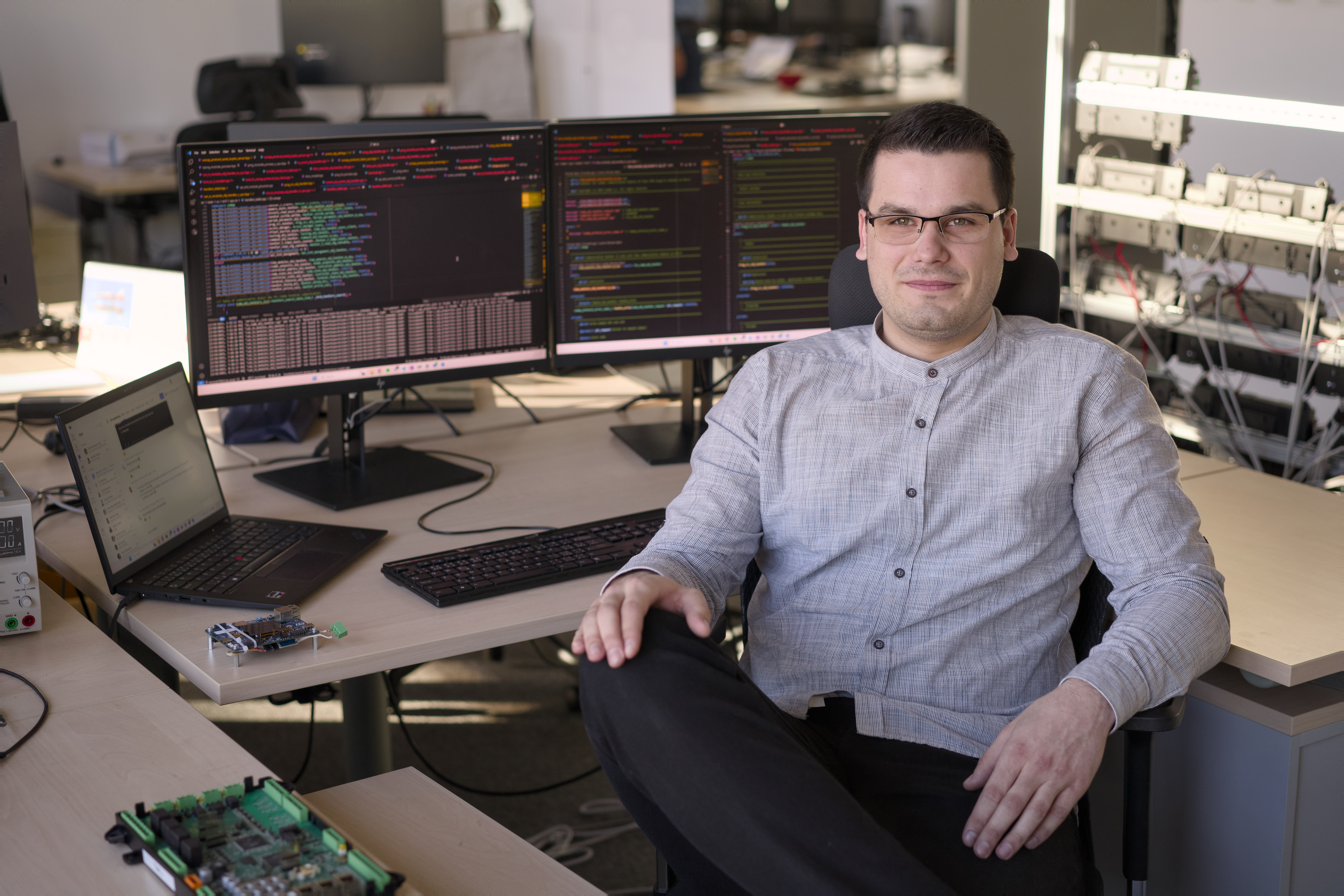You need an account to access this content
Create a free account and get access to all downloads and more!

Life At ComAp
5 May 2025
5 min read
Meet Dominik Mašľár, a Junior Software Engineer on our R&D team in Košice, Slovakia. Dominik joined ComAp as a university graduate on a specialised team of embedded developers. He began working on the most advanced controllers, such as the InteliGen 1000 and InteliSys 2000. After a year on the job, Dominik has already established a reputation as a reliable application developer who welcomes challenges. We interviewed him about his first year to find out more about his transition from a university graduate to a respected full-time programmer.

How did you become involved with ComAp, and what factors led you to decide that you wanted to work with us?
As is often the case nowadays, social media have played a significant role. I saw on Instagram that ComAp was looking for a software engineer. It was right before my state exams, and I wanted to work in embedded development. There aren't many companies in my area with a similar focus, plus it was a junior position.
What expectations did you have for your future work? Were they fulfilled?
My main expectation was to work on projects and be in an environment where I could advance my knowledge and skills personally. At ComAp, I am surrounded by intelligent individuals who patiently share their expertise, so I can safely say my expectations have been met.
Please share with us what you believe are the biggest differences between school and your first job.
At university, learning takes place in a protected environment and is assessed through grades. In practice, multiple factors come into play and change rapidly. My work assignments have a greater impact than my school assignments did. Additionally, in a professional environment, I experience a more detailed approach to problem-solving and draw on the varied experiences of my colleagues.
Did you have the necessary knowledge from school?
During my bachelor's and master's theses, I already did embedded development using two different chips. This gave me more knowledge compared to other students, and I was able to apply that knowledge directly in my first job. I’d strongly recommend that students begin specialising during their studies to better prepare for real-world opportunities.
What was the period after joining ComAp like? Was it challenging to learn the job role?
I think I adapted pretty quickly. My experience from university, along with the support of my buddy at ComAp, Jaro, helped me a lot. Jaro was always willing to explain specific ComAp technologies to me. During the trial period, I spent almost every working day in the office, which really accelerated my settling in and helped me get to know the team. It wasn't always easy, as I commute 50 kilometres to work. But after the probation period, I could also start working from home, which has been a huge benefit for me.
You work as an application programmer. What does it mean? What tasks do you typically deliver?
As an application programmer, I deliver functionalities that the customer directly encounters in the functional application of our products. Just to explain, at ComAp, we also have lower-layer programmers who take care of communications, memory access, peripherals, and similar tasks. All of this forms the foundation for the application layer that I work with.
It's probably best if I provide examples of some of the tasks I've delivered. For instance, customers using our controllers to control generators in hydroelectric power plants have requested a generator start-up triggered when a specific voltage or speed level is achieved by increasing water flow. Another task involved converting values received from the ECU control unit, particularly from metric to imperial units, for a customer in North America.
These real-world applications make the work rewarding. It’s a great feeling to know that somewhere on the other side of the world, a solution I created is helping a customer.
How does your work as an embedded developer differ from that of your colleagues who develop desktop applications?
In embedded development, I work with embedded systems designed for control. In our case, it involves controlling low-voltage devices using a controller. Therefore, in my work, I also deal with various hardware components, not just a computer, which is the primary tool for most developers. I work with the controller and its physical inputs, various converters, modules, drivers, and more.
I also need to have at least a basic understanding of electrical engineering, since I work with low-voltage systems. The close connection to hardware requires programming in C or C++, which involves more memory management than is usually needed for desktop development. In other areas, I believe our development processes are quite similar.
What was it like working with experienced colleagues?
I definitely noticed a knowledge gap at the beginning. All of my colleagues were helpful and explained things to me, including new technologies and ComAp-specific terms. After the initial learning phase, I started working on simpler assignments, mainly with my buddy Jaro. Gradually, I moved on to more complex tasks. I still often consult with more experienced colleagues, and this is how I’ve been able to steadily narrow the knowledge gap.
How is programming at home as a hobby different from a programming job?
When programming at home on my own projects, I have more freedom to choose the technologies and programming style. But that’s natural, since in a work environment, products are usually developed using long-established technologies. This requires the developer to adapt to the existing codebase, where they encounter different programming styles. This pushes me to grow in terms of knowledge. Each new project also brings exposure to new technologies.